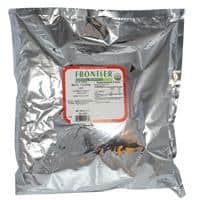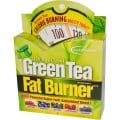Description
Nettle, Stinging Leaf, Organic, C/S, 16 oz, 453 g, Frontier Natural Products
Description
- Urtica Dioica
- USDA Organic
- Herbal Supplement
- Kosher
- Certified Organic by QAI
Stinging nettle is a perennial herb originating in Eurasia, but now naturalized over much of the world. Its many documented uses, from as far back as the Bronze Age, led to its seed being carried to numerous regions by settlers, where the plant soon escaped cultivation. The whole stinging nettle plant is valuable — leaves, seeds and roots. Its uses include food, traditional remedies, a fiber source, a dye plant and a rejuvenating spring tonic.
There are two species of nettle recognized in various pharmacopoeia’s as interchangeable — Urtica dioica, or stinging nettle, and Urtica urens, or dwarf nettle. Dwarf nettle is a two- to three-foot annual with a taproot, while stinging nettle is a tall perennial with creeping rhizomes that send up new plants, often creating thickets of stinging nettle. Urtica dioica, is the species most often offered as the herb in the U.S., although dwarf nettle is sometimes sold in Europe and can occasionally be found mixed in with nettles herb in this country when the plants sold were wild-harvested in Europe.
Stinging nettle herb grows up to six feet in height. It prefers rich, moist soil and is found growing wild in temperate zones around the world on stream banks, disturbed soils and partly shady areas. The stem and leaf of the nettle plant are covered with two types of plant hairs or trichomes — stinging trichomes and glandular trichomes. The stinging trichomes contain an irritant made up of histamine, acetylcholine and serotonin. When the fresh plant is brushed, the tips of the stinging trichomes break off into the skin, releasing their contents. The burning, stinging, irritating feeling at the site of a nettle sting can last for several hours. For those who have accidentally brushed against nettles and been rewarded with the stings, it’s hard to believe that people have intentionally lashed themselves with brunches of fresh nettle to provoke this irritating skin rash. Using nettles in this way as a counter-irritant, is an age-old remedy called urtication, and was done to stimulate or warm a limb or joint.
When the herb is dried, the constituents responsible for the sting are quickly dissipated — although even with their stings neutralized, the trichomes on the leaves and stems can cause skin irritation in the dried herb. These stinging trichomes can be seen in the lab under a microscope. The large hollow hypodermic needle-like structures seen in the photo are the stinging trichomes on a dried nettle leaf. Other non-stinging trichomes cover the leaf.
The parts used of the nettle plant used include the leaf, stripped from the stem after drying, the roots and the seed. Freeze-dried juice and leaf are used when the constituents found in the stinging trichomes are desired in the final product.
Constituents of Note: Chlorogenic acid, while present at low levels, is considered a key marker ingredient in nettles herb. A variety of other constituents, including flavonoids and histamine and other amines, and plant sterols are also present. Nettles leaf also contains a variety of nutrients that vary in quantity depending the age of the plants and where and when they are harvested — vitamin C, beta-carotene, calcium, magnesium, chlorophyll, proteins and dietary fiber have all been reported. Nettles root contains several lignins, tannins and phytosterols.
Quality: Stinging nettle leaf is best harvested when the herb is in full bloom and before it goes to seed, so little or no seed should be present in the dried herb. Nettle leaf should not have any woody or large stems with less than 5% of small, thin stem pieces present. Due to their fibrous nature, clumps of leaves may be present in the herb. Nettle leaf is medium green in color with the upper surface of the leaves a darker green and the underside lighter green as seen in the picture of fresh leaf shown here. A small amount of yellow to brown leaf may be present. Washed out or pale green colored nettle leaf may indicate old herb, while very dark brown to black leaves indicates excessive leaf damage during harvest, harvesting leaves while wet, or poor drying conditions. (It’s important to dry nettle leaf quickly to prevent off-flavors and mold.)
The flavor and aroma of the nettle leaf is another indication of quality. The aroma of good quality nettles is faint and herbaceous with a slightly bitter, slightly salty, pleasant, herbaceous flavor. Nettle leaf that smells musty or has a strong, unpleasant musty or fishy flavor is of poor quality.
Stinging nettle root is harvested in the fall and includes the roots and the rhizomes of the plant. The outside of the root is gray-brown in color and white or ivory inside around the hollow core. Nettle roots have a twisted appearance with distinct grooves in the bark. They have a mild flavor and are slightly mucilaginous when chewed.
Suggested Use
To make stinging nettle leaf tea, pour 1 cup of boiling water over 1 to 2 teaspoons of herb, cover and let steep for 5 to 10 minutes.
To make stinging nettle root tea, add 1 cup of water to 1/2 to 1 teaspoon of nettle root and bring to boil, then simmer for 5 minutes. Let stand for 10 to 15 minutes, then strain.
Nettle leaf is used in shampoos and hair rinses, in teas, and some skin care products. As an herb, it is known as a blood builder and multi-mineral source*, thus the popularity of the fresh young shoots as a spring tonic.
The tannins in nettle root account for its astringent properties. It is used as a tea, skin wash and a gargle. Nettle root is also used in hair care preparations. While nettle has not had the broad popularity of nettle leaf, that could change as current scientific studies explore the effects nettle root may have on various hormone related chemical processes in the body, especially in men.
Warnings
Non-irradiated
Caution/Safety: The Botanical Safety Handbook* classifies stinging nettle as:
Class:1 herbs which can be safely consumed when used appropriately
Per the German Commission E Monograph** for nettle leaf there are no known contraindications, side effects or drug interactions. For nettle root there are no known contraindications or drug interactions and side effects listed are occasionally, mild gastrointestinal upsets.
*Michael McGuffin, ed., American Herbal Products Association’s Botanical Safety Handbook, (New York: CRC Press, 1997)
**Mark Blumenthal, ed., The Complete German Commission E Monographs, (Austin TX: Integrative Medicine Communications, 1998
|
Supplement Facts |
||
|
Serving Size: 2 tsp (901 mg) |
||
|
Servings Per Container: About 503 |
||
|
Amount Per Serving |
%Daily Value* |
|
|
Total Carbohydrate |
1 g |
<1% |
|
Calcium |
24 mg |
2% |
|
Organic Stinging Nettle, cut (leaf) |
901 mg |
** |
|
* Percent Daily Values are based on a 2,000 calorie diet. ** Daily Value not established. |




